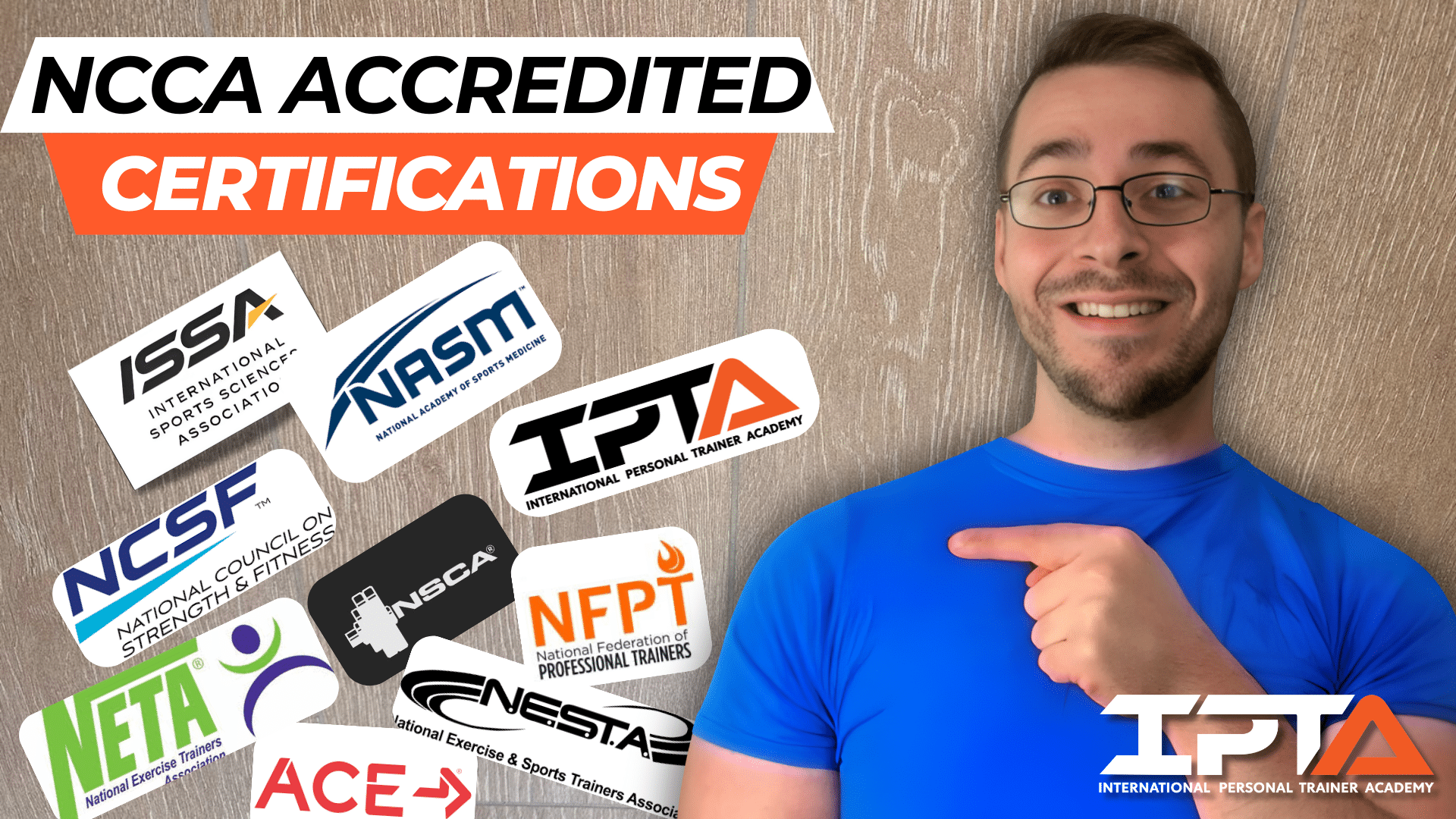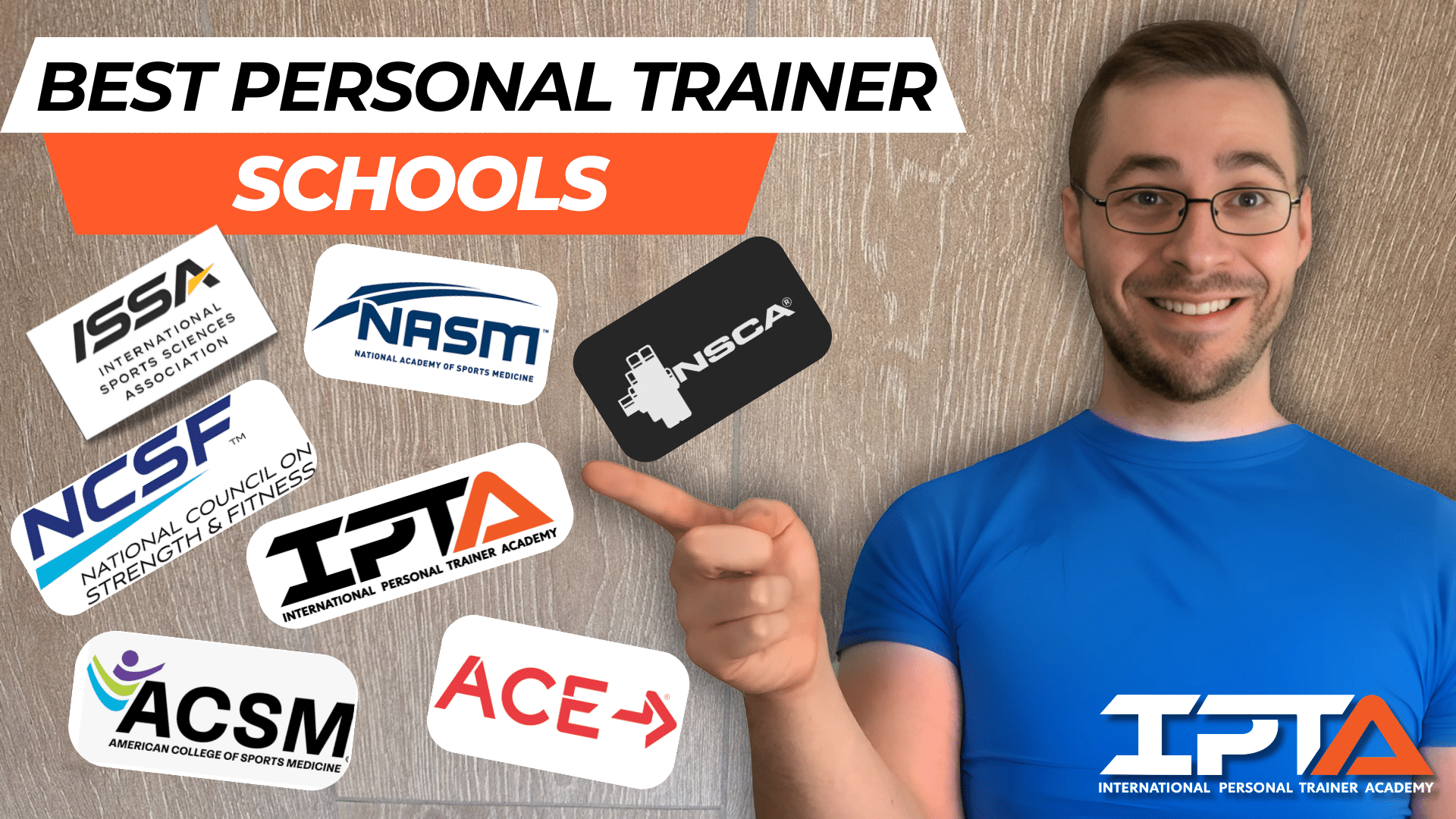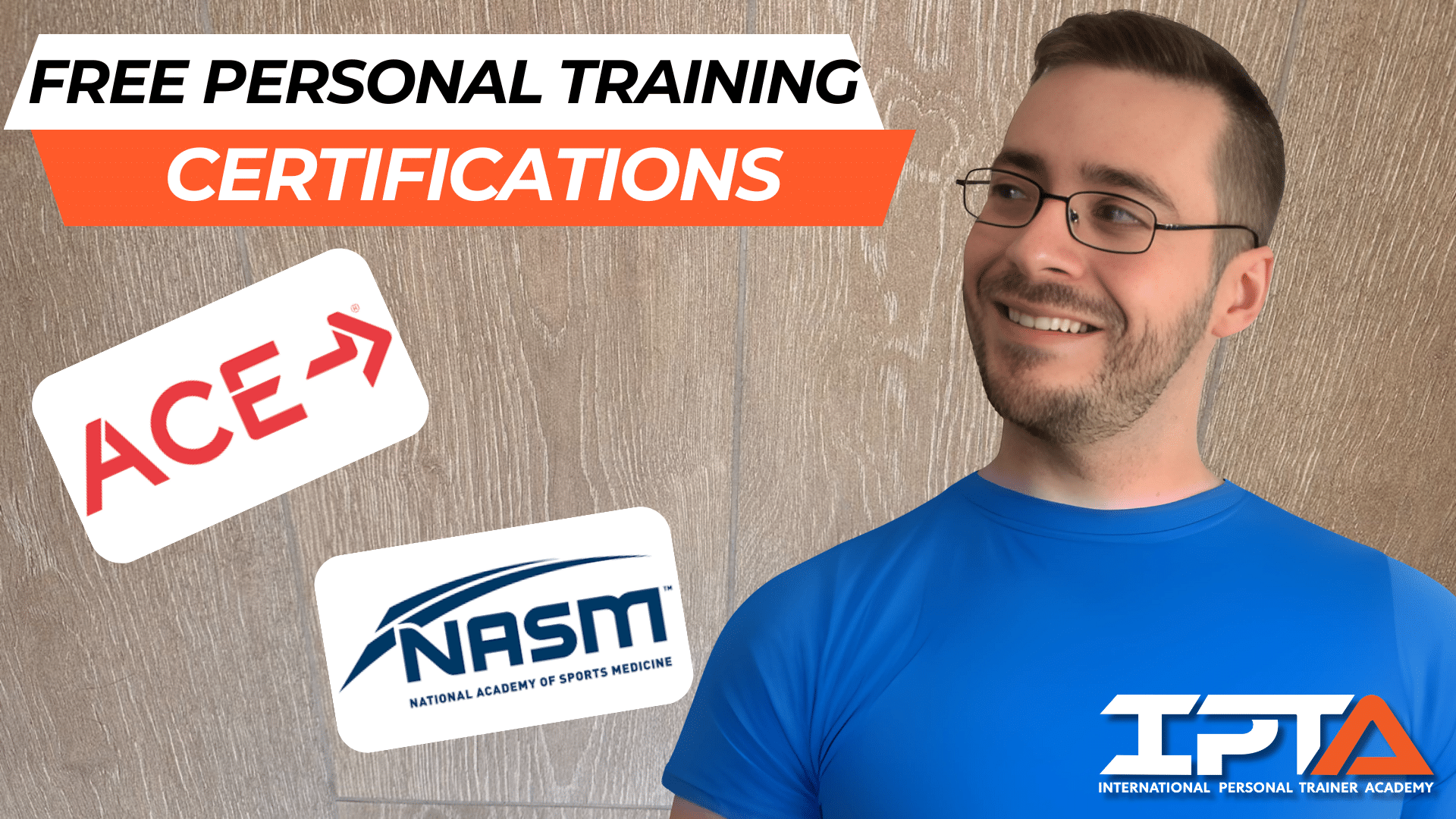
This Trainer Academy guide to the best corrective exercise certification is based on our team’s collective experience taking dozens of fitness certifications, including the top corrective exercise certifications in the industry.
Several of our trainers have completed multiple corrective exercise specialist certifications, so we can certainly speak to which corrective exercise programs are great, and which ones fall short
In this corrective exercise certification roundup, we cover the following aspects of each corrective exercise specialist certification:
- Reputation of each CES certification
- Cost and value for each certification
- Content and curriculum topics covered
- Corrective exercise specialist exam difficulty
- Salary and career prospects for each corrective exercise certification
By the time you finish reading, you’ll be set to choose the best corrective exercise specialist certification.
Note that usually, you need a personal trainer certification to earn the title of a corrective exercise specialist. Be sure to take the quiz to determine which certification makes the most sense for your career goals.
Let’s begin.
We highly recommend that you take our helpful quiz to find the best corrective exercise certification for you.
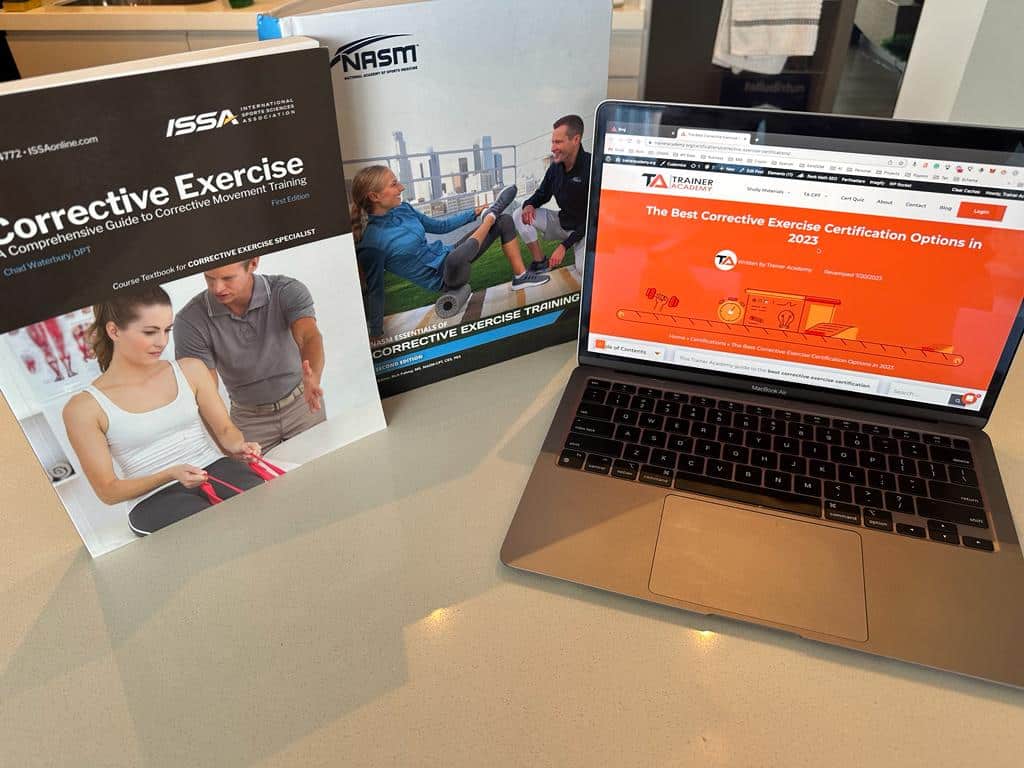
| CES Cert | CES Cert | Features | Price |
|---|---|---|---|

|
| Check ISSA Pricing | |
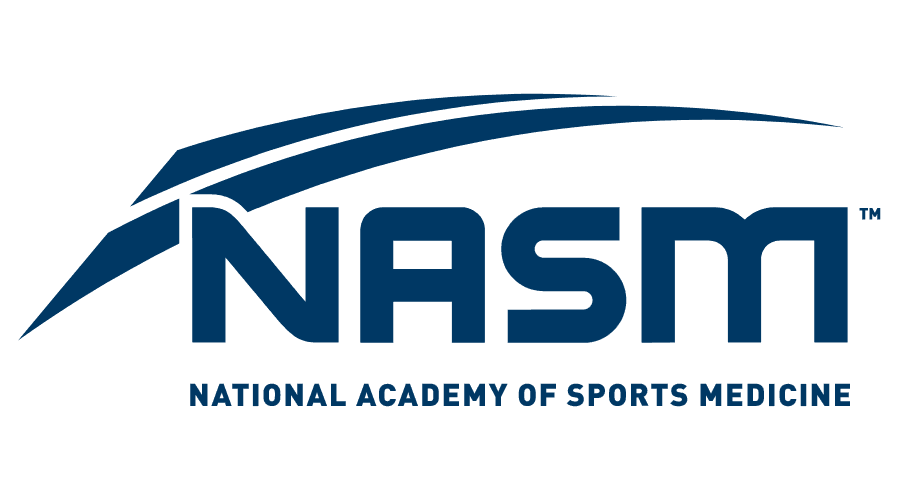
|
| Check NASM Pricing | |

| The Biomechanics Method Corrective Exercise Specialist Certification |
| Check TBMM Pricing |
Why are we qualified to recommend the top corrective exercise certifications?
Corrective Exercise is one of many personal trainer specialties. The focus of corrective exercise is all about finding muscular balance, gaining range of motion, and improving mobility.
Corrective exercise is one of the specializations you can enter after you become a fitness instructor, and it has its own set of benefits and functions in the fitness industry and can allow you to make more money as a personal trainer.
At gyms all over the country, you’re likely to find at any given moment someone trying to squat on a bosu ball without toppling over. But corrective exercise is more than just finding a good balance.
Corrective exercise is a middle ground between personal training and physical therapy strategies. The world of kinesiology, conditioning, and rehabilitation all come together in corrective exercise.
To be a great corrective exercise specialist, you will need to know all of the basic anatomy and physiology, as well as injury prevention, proprioception, stability, and functional fitness teachings.
General wellness, flexibility, and motor control are some other important topics that are found within these CES programs, and most of the main personal training topics are found at least briefly, besides topics such as nutrition. But, most other domains of knowledge will be found and implemented in a more specific, finely detailed manner.
Physical therapists use corrective exercise methodologies to treat injuries, reduce pain, and improve fundamental movement patterns..
Certified personal trainers should be using it for the same reasons, but the difference is that their clients are there for fitness, not just for injury treatment.
A lot of times, personal trainers will have to work around an injury, but corrective exercise is a good way of meeting it head-on. Improving the range of movement and fixing any muscular imbalances can definitely help a client get more fit and improve their quality of life.
Like all trends, there is a mixture of good and bad. And in this case, it’s super important to be implementing it properly.
Improper corrective exercise can exacerbate injuries and, frankly, can be a waste of your client’s time if it’s not needed.
Certified corrective exercise salaries are also increasing at a solid rate, similar to personal trainer salaries and other personal training specialties.
Keep in mind that since you will be a fitness trainer, regardless of other certifications you hold, personal trainer insurance will be required.
I highly recommend pursuing a standard personal trainer certification on top of your corrective exercise certification.
Standard personal trainer classes give you a much better framework of exercise techniques and exercise strategies to support your corrective training program when helping individuals with muscle dysfunctions.
Additionally, having the corrective exercise qualification can make it easier to get a job as a personal trainer. You can also include corrective exercise as part of a master trainer program.
With that said, not every certified corrective exercise instructor certification incorporates corrective exercises effectively, so it’s important to get certified by the right people.
Let’s take a look at what’s on offer for a future corrective exercise specialist.
International Sports Sciences Association (ISSA)
What is the ISSA CES?
The International Sports Sciences Association Corrective Exercise Specialist certification (ISSA-CES) is ISSA’s stab at offering a corrective exercise specialist course aimed at fixing muscle and movement imbalances and improving biomechanical patterns in general fitness clients.
The ISSA CES materials are among the best the industry has to offer, and they will benefit most personal training practices.
This program is ideal for learners who want to focus a bit more on the value of their money, as you will find more bundles and deals when you go with ISSA for getting multiple certifications.
Given that you need a personal trainer certification to effectively coach corrective exercise, I highly recommend checking out the ISSA Elite Trainer program if you do end up going with ISSA.
The Elite Trainer comes with the famed ISSA CPT program, the ISSA Nutritionist certification, and the ISSA Corrective Exercise Specialist (or a different certification of your choice). Basically, you get three certifications for the price of one.
We generally recommend the Elite Trainer program to all of our motivated students who want to crush it in their fitness careers as quickly as possible.

ISSA Corrective Exercise Specialization General Information
- Exam cost: $639.24
- Study material cost: $53.27/month for 12 months
- Prerequisites: High School Diploma, CPR/AED
- Exam passing score: 75% on each section
- Exam pass rate: 90%
- Average completion time: 3-5 months
ISSA Credibility and Reputation
The International Sports Sciences Association (ISSA) is a highly-respected international organization for certifying fitness professionals.
The ISSA offers a diverse array of fitness courses for personal trainers, group exercise instructors, bodybuilding coaches, and other professionals across the globe.
Since its establishment in 1988, ISSA has been a major player in the fitness domain.
The organization has continually evolved with the times, and now provides a broad range of certifications to equip fitness specialists with the latest and greatest scientific workout knowledge.
The evolution of the ISSA offerings has consistently impressed our team.
The ISSA offers several NCCA-accredited online fitness certifications, including the famed ISSA CPT.
The National Commission for Certifying Agencies (NCCA) is the gold-standard for approving fitness organizations, and every legit fitness certification provider has at least one NCCA-accredited cert.
This CES certification has many testimonials from people with coaching expertise, and this adds to the credibility of the organization’s certification results.
ISSA CES Pros and Cons
- Solid exercise science principles
- Effective online resources
- Great free exercise library
- No comprehensive training framework
ISSA CES Cost and Study Materials
The ISSA Corrective Exercise Certification is offered through an online format with a study portal that gives many video demonstrations or webinars, as well as optional downloads and assessment resources.
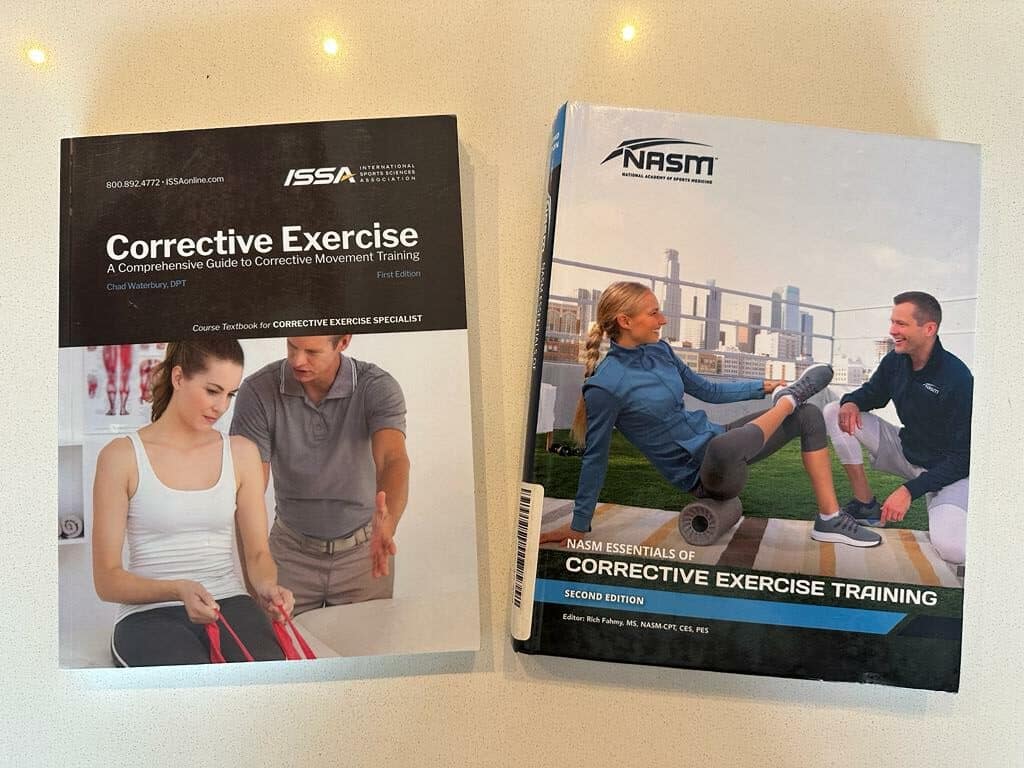
There is only one ISSA CES study package, which includes the following resources:
- Online Course Textbook
- Online Study Guide and Workbook
- Online and Home Study Exam
- Online Exercise Lab
- Online Student Forum
- Practice Exam and Section Quizzes
On top of the information above, ISSA is known to have some of the easier tests and quizzes to pass, while still keeping up with the details provided by the competition.
The ISSA CES costs roughly ~$650, although you can make $53.27 payments with 12-month, interest-free financing.
ISSA Curriculum
The CES course from ISSA is offered through an online format with a study portal that gives many video demonstrations or webinars, as well as optional downloads and assessment resources.
The curriculum breaks down into two overall sections, with each covering various subtopics.
The breakdown is as follows:
Section One: Corrective Exercise Science
- Skeletal System
- Muscle and Fascia
- The Nervous System
- Joint Actions
- Movement
Section Two: Corrective Exercise Practice
- Preparing for the Client
- Create a Just Right Challenge
- Perform a Single-Joint Movement Analysis
- Perform an Upper Body Multi-Joint Movement Analysis
- Perform a Lower Body Multi-Joint Movement Analysis
- Restore Structural Alignment and Stability
- Restore Mobility through Stability
- Soft Tissue Assessments and Correctives
ISSA does not have an overall model like ACE and NASM for their learners to ‘plug and play,’ but still manages to teach all of the essential content and experience of corrective exercise courses.
ISSA breaks down its information in the textbook into two sections which cover most of the corrective exercise information.
These two sections are corrective exercise science and corrective exercise practice. In total, the text consists of 13 units, with there being 5 in the first section and 8 in the second section.
Something that ISSA could improve its materials with would be a chapter highlighting equipment that can be used or chapters specific for body locations like NASM, where there are chapters for each area like ankles, knees, shoulder girdle, spine and hips, to name a few.
ISSA CES Exam Difficulty
The ISSA Corrective Exercise Certification has a fairly straightforward final exam you can take online from home. Since the exam is open-book, it really is a matter of knowing the material well enough that you can quickly look up what you need to.
Overall, our entire Trainer Academy team passed the ISSA CES without any real issues.
We don’t recommend signing up and winging it on the exam.
After all, the main point is being able to implement the skills when dealing with real clients. The exam itself is more of a formality regarding this certification.
ISSA Corrective Exercise Overall Rating
NASM Corrective Exercise Certification
What is the NASM CES?
The National Academy of Sports Medicine Corrective Exercise Specialist Certification is perhaps the most well-known certification for coaching corrective exercise in the industry. We place it behind the ISSA Corrective Exercise Certification simply because we feel the exam is a bit more difficult than it needs to be, and many students struggle with test anxiety.
Curriculum content-wise, the NASM CES delivers exceptional quality.
Some of our best corrective exercise trainers have the NASM CES and over a decade of successfully fixing clients’ muscle imbalances through the NASM Corrective Exercise continuum.
It is important to know that this program is best suited for people with background knowledge of muscle specifics or someone who already has achieved the NASM personal trainer or other health certification, as they would be familiar with the NASM model.
As such, the NASM corrective exercise certification is a good choice if you need additional CECs.

NASM CES General Information
- Study program cost: $449 – $1,199
- Prerequisites/Recommendations: NASM CPT cert, other NCCA Accredited Certification, Massage therapy cert, or 4 year college degree
- Exam passing score: 70%
- Average completion time: 3 months
NASM Credibility and Reputation
NASM is arguably the most respected fitness certificate provider and personal trainer school in the United States. Virtually every gym that hires certified trainers will weigh the NASM certifications pretty heavily in terms of which candidates they hire.
As with any serious fitness certifying agency, NASM offers several NCCA-accredited certification options, including the flagship NASM Certified Personal Trainer (NASM-CPT) program, which is among the best personal trainer programs in the industry.
NASM also offers a performance enhancement specialist certification which aims to focus more on athletes and their training, but corrective exercise is a beneficial certification for this approach, too.
NASM CES Pros and Cons
- Great exercise science foundation
- Frequent updates to materials as research evolves
- Difficult exam
- Requires prior background certification/education
NASM CES Study Materials and Costs
The NASM CES program is offered through an online platform, but they also offer programs that include a live workshop where you can see for yourself corrective exercise in action.

The biggest perk to this program is its actionability.
The steps are clearly laid out, and each one describes what to do and how it works.
The course includes an online study portal, textbook, and various additional resources.
The NASM Corrective Exercise Certification costs $539.00 or $49/month for 12 months with interest-free financing.
NASM Corrective Exercise Curriculum
The overall curriculum is as follows:
Section 1: Introduction to Corrective Exercise Training
- Rationale for Corrective Exercise
- Human Movement Science and Corrective Exercise
Section 2: Corrective Exercise Techniques
- Inhibitory Techniques
- Lenthening Techniques
- Acitvation Techniques
- Integration Techniques
Section 3: Assessment
- Client Intake and Assessment
- Static Assessments
- Movement Assessments
- Mobility Assessments
Section 4: Programming Strategies
- Corrective Strategies for the Foot and Ankle
- Corrective Stratgies for the Knee
- Corrective Strategies for the Lumbo-Pelvic-Hip Complex
- Corrective Strategies for the Thoracic Spine and Shoulder
- Corrective Strategies for the Wrist and Elbow
- Corrective Strategies for the Cervical Spine
- Self-Care and Recovery
- Real-World Application of Corrective Exercise Strategies
In terms of the skills in the certification, NASM simplifies its corrective exercise into a four-step continuum, which really defines the steps and techniques that can be used for corrective exercise.
The first step on the continuum is to inhibit overactive muscles.
In this stage, the goal is to reduce tension in affected areas, reduce any soreness present, and improve circulation to the area.
The second step is to lengthen muscles via static stretching techniques to build on the inhibition from step one.
The next step is to activate underactive muscles. This step isolates the affected muscles and strengthens any that are underactive or weak.
The final step is to integrate.
This involves dynamic total body exercise to incorporate into everyday workouts or just day-to-day life, focusing on coordination, movement patterns, and improving general performance.
NASM has a close focus in its later chapters on the limitations, muscle groups, communication strategies, restrictions, contraindications, and muscle dysfunction.
These are some of the prime teachings of corrective exercise specialists.
NASM CES Exam
The NASM corrective exercise specialist is well known to have a harder certification exam, which may garner more respect from employers. The exam itself is an online and technically open-book test, as there is no proctor.
However, you have a time limit to complete the exam, so you need to know the curriculum ahead of time, or you will have a tough time passing the exam.
If you work your way through the NASM curriculum and take the quizzes interspersed throughout, you should be fine on the CES exam.
NASM CES Overall Rating
American Council on Exercise (ACE)
What is ACE CES?
Another respected program is ACE. The ACE certification for corrective exercise specialization is actually a partnership with The Biomechanics Method (TBMM).
It is divided into five modules.
The Biomechanics Method is also a stand-alone organization that provides CEUs for a variety of certifications, but they specifically partner with ACE to give CEU credits and the “Corrective Exercise Specialist” title. That being said, the TBMM is not technically a certification but just a CEU course.
This ACE/Biomechanics Model certification, also written as TBMM-CES, is broken down into modules for students to easily find the needs for course completion and implementation in clients’ exercise programs.
The big note for this program is that it is not a traditional CES certification like the aforementioned ISSA and NASM certifications, but instead, it is a specialization meant for education and, of course, continuing education credits, or CEUs, needed for recertification. Many organizations ranging from the ACSM to ACE and NASM accept the TBMM certification for CEUs.
Still, with that last note, it is important to recognize that this is still a valid certification to pursue.
ACE Credibility and Reputation
The American Council on Exercise (ACE) is a highly respected fitness certification provider that operates as a non-profit.
The ACE organization offers its famed ACE Certified Personal Trainer (ACE-CPT) certification as its main NCCA-accredited offering.
As mentioned, ACE partners with The Biomechanics Method (TBMM) to deliver the corrective exercise certification. With that said, the certification is not technically an “ACE” certification in the true sense.
However, ACE lends its credibility to the corrective exercise course and allows ACE-certified trainers access to the same knowledge that other certifications offer in their corrective exercise certifications.
ACE CES Pros and Cons
- Effective approach to chronic pain
- Large exercise library
- Expensive
- Technically CEUs, not a certification itself
ACE CES Study Materials and Costs
The course is delivered via textbook and online study materials. The course contains online lessons, digital material, video instruction and demos, self-check quizzes, assessment forms, and the final online test.
The cost for the TBMM course is $749.00.
This major library of exercises highlights the regressions, progressions, and exercise program design for all the areas of the body, with high importance placed on the more commonly injured joints like the shoulder, knee, hip, ankle, and basically all five major kinetic chain checkpoints.
The exercise library is similar to the other two certifications in this article and includes some form of audio lectures, a study guide, videos, and in-depth guidelines in easy-to-navigate forms.
ACE CES Curriculum
The curriculum in the ACE corrective exercise program breaks down into the following units:
- The Fundamentals of Structural Assessment
- Understanding Muscles and Movement
- The Fundamentals of Corrective Exercise
- The Complete Corrective Exercise Library
- Corrective Exercise Program Design
The first module covers the steps for conducting musculoskeletal assessments on clients so you can identify the common muscle dysfunctions that lead to movement issues and pain.
These include verbal, visual, and manual techniques for assessing the following checkpoints:
- Ankles and knees
- Lumbo-pelvic hip girdle
- Thoracic spine
- Shoulder girdle
- Neck and head
Furthermore, you learn how these imbalances in each area affect the entire body.
The second module focuses more on overall anatomy, teaching you the following aspects of muscles:
- Major muscle groups
- Muscle origins, insertions, and functions
- How gravity and ground reaction forces change the way the body moves
The third module focuses on eliminating the dysfunctions caused by muscular imbalances, as detected in the assessments you learned in module 1. Methods include self-myofascial release, stretching exercises to increase mobility and range of motion, and then strengthening exercises. It also covers contraindications for each type of exercise to ensure the client’s safety when working through the program.
Module 4 covers the demonstrations and descriptions of nearly 200 corrective exercises for addressing the various musculoskeletal imbalances common in corrective exercise clients.
Finally, module 5 covers program design to bring everything together. This section allows you to take your assessment findings, knowledge of the human body, and corrective exercise techniques to deliver effective results for your corrective exercise clients.
In our experience, this curriculum flow is very effective for giving you the skills you need to work with the vast majority of clients who come to your doors in need of corrective exercises.
ACE CES Exam
The final TBMM corrective exercise exam is open-book with no time limit and unlimited re-takes.
As such, it’s effectively a formality just to prove you worked through the material, as opposed to trying to weed out candidates who didn’t memorize every last detail.
ACE CES Overall Rating
Which Corrective Exercise Certification is Right for You?
The short answer is that it depends on you! It’s important to do your research, really consider your current level of knowledge, and choose from there.
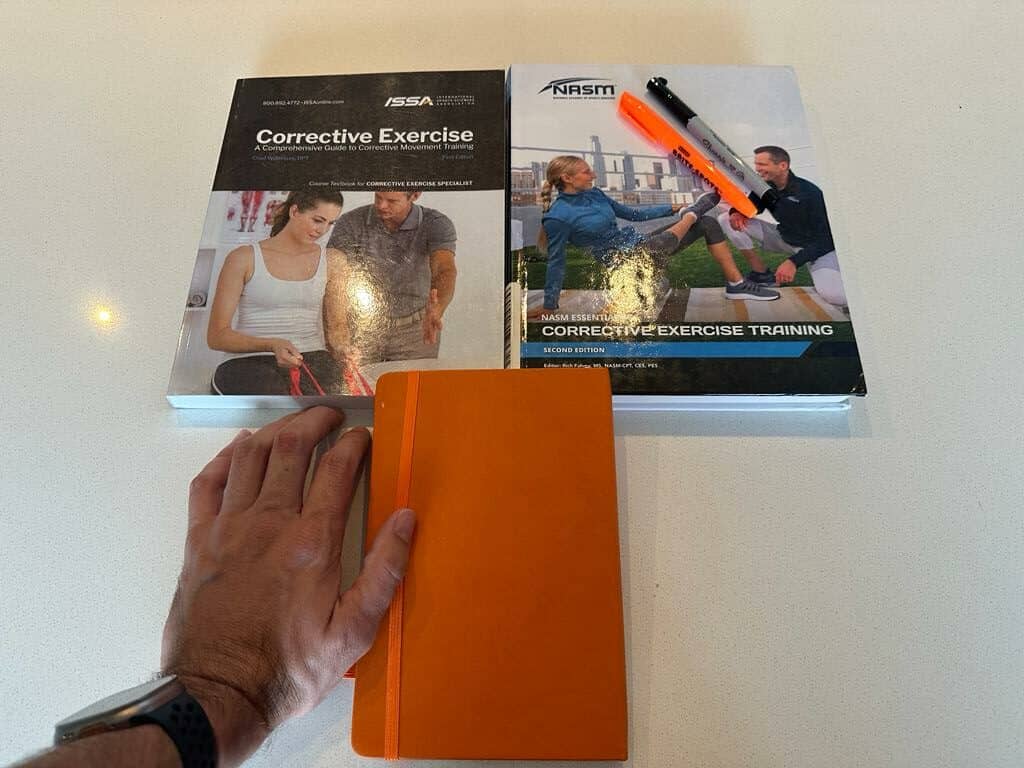
Based on my experience with these programs in the fitness space, I believe these three teach corrective exercise skills and abilities more so than the rest of the corrective exercise training package competition in the market.
If you currently have a certification from one of these three certifying fitness organizations, then I would most likely suggest that you go with the same organization, as recertification and other small things are made easier.
If you are yet to enter the fitness industry and are looking to make the CES field your first certification, then I would suggest that if you want the highest value for multiple certifications, go with ISSA. If you want the benefits of the top fitness program model, the OPT model, then I would suggest you go with the highly regarded NASM CES. And lastly, if you want a specialization course, as opposed to a full-on certification, then the Biomechanics Method course done through ACE would be the ideal path.
A good deciding factor would be thinking about which certificate you think you’ll be able to put to the greatest use in your programs. To me, the simplicity of NASM’s corrective exercise makes it easy to use in real life, with real clients, and with real problems.
Corrective exercise is a valuable skill as a personal trainer that can add value to your business. Learning the proper way to assess and implement a program can help you and your clients to live happier and healthier!
Frequently Asked Questions (FAQs)
What are the costs associated with corrective exercise certification?
The ISSA CES costs $649, but can often be found in bundles from ISSA to make multi-cert purchases a lot cheaper. On top of that, they often hold sales on their programs.
The NASM CES program costs $539 as a base price and they also often have a deal on their programs, but less so with multiple cert purchases.
The ACE Biomechanics Model specialization course comes in at $749.
What are the requirements for corrective exercise certification?
To get certified in the fitness industry, the typical requirements are going to be:
-18 years of age
-High school diploma
-Current CPR / AED certification
-Current CPT or Bachelor’s Degree
Who offers the best corrective exercise certification?
The best corrective exercise program is not going to be universal, but narrowing down the best options is easily done. The best CES certifications come from the NASM, ISSA, and ACE organizations.
What other specializations are good for a CES certified professional?
You will see a large variety of certifications from trainers with a CES certification. Some other common ones will be a standard CPT certification or even something as specific as yoga training courses from a reputable company.
Personal trainer schools also offer a beneficial viewpoint for entering the fitness industry.
The fitness business has options for everyone and with a firm understanding of trends, trainers can craft a service for any type of client.
Some other similar and valuable specializations would be strength and conditioning certifications, health coach certifications, and group exercise certifications.
How do you know if a corrective exercise certification will be beneficial?
CES certificates are quite beneficial for the average trainer. Pretty much all fitness businesses could benefit from having specific corrective exercise knowledge.
With the rise in need for fitness careers for the general public and the increase in injuries due to inactivity and obesity, corrective exercise certification is a great addition to fitness professionals.
What is corrective exercise?
Corrective exercise is a type of personal training credential focused on improving functional movement, especially in relation to kee issues such as low back pain and knee pain.
What is a corrective exercise specialist salary?
Corrective exercise specialist salaries vary from 40,000 to 80,000 per year, depending on experience and which corrective exercise specialist jobs you pursue. Additionally, case studies demonstrating improvements to your client’s abilities go a long way toward increasing your salary.
References
- Seidi F, Bayattork M, Minoonejad H, Andersen LL, Page P. Comprehensive corrective exercise program improves alignment, muscle activation and movement pattern of men with upper crossed syndrome: randomized controlled trial. Scientific Reports. 2020;10(1):20688. doi: https://doi.org/10.1038/s41598-020-77571-4
- Kiyany F, Safaeian A, Shahsanai A. Corrective exercises or ergonomic principles for workers with low back pain. Indian Journal of Occupational and Environmental Medicine. 2021;25(4):204. doi: https://doi.org/10.4103/ijoem.ijoem_255_19
- Sedaghati P, Ahmadabadi S, Goudarzian M. Evaluation of the durable effects of corrective exercises on the postural alignment and stability in hyperkyphotic elderly with a history of falls. BMC Geriatrics. 2022;22(1). doi: https://doi.org/10.1186/s12877-022-03210-4









